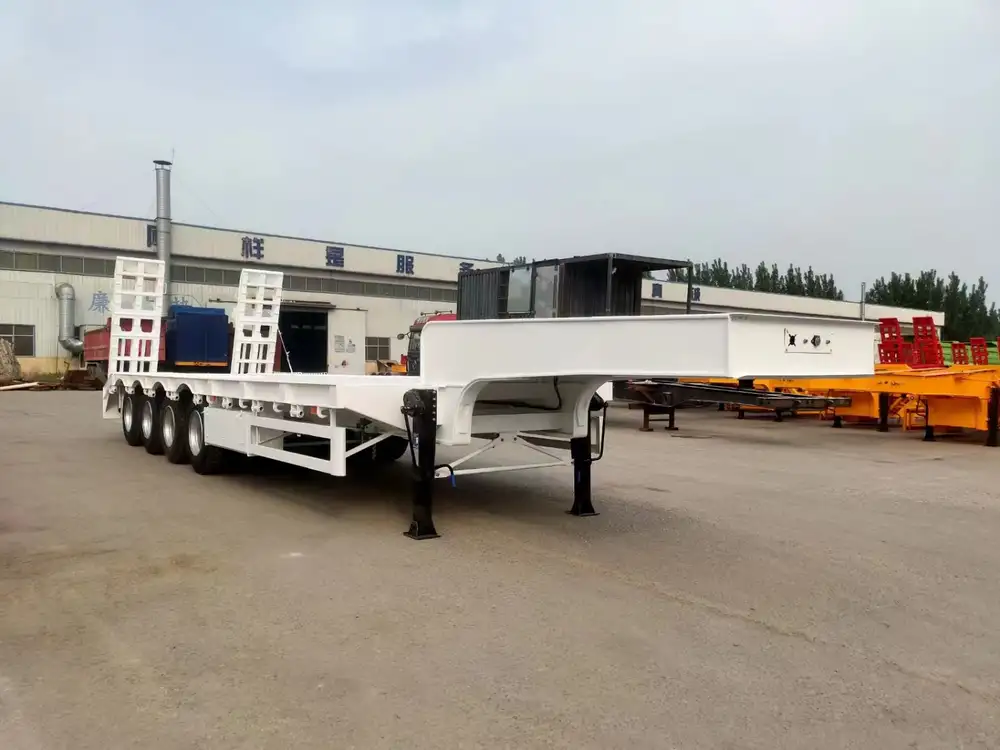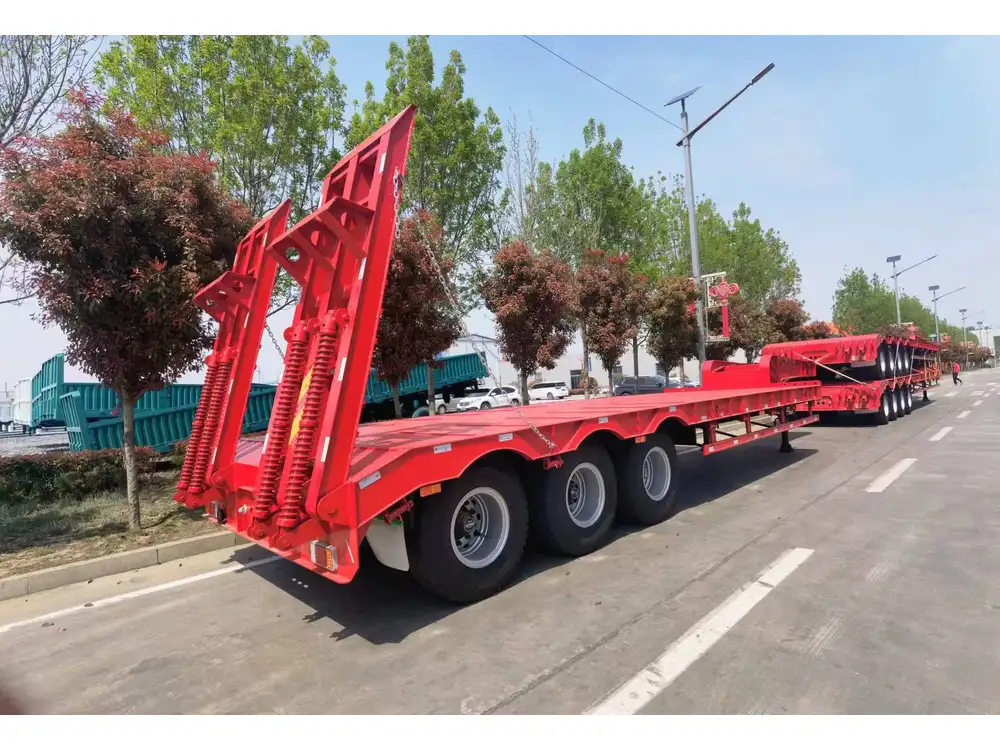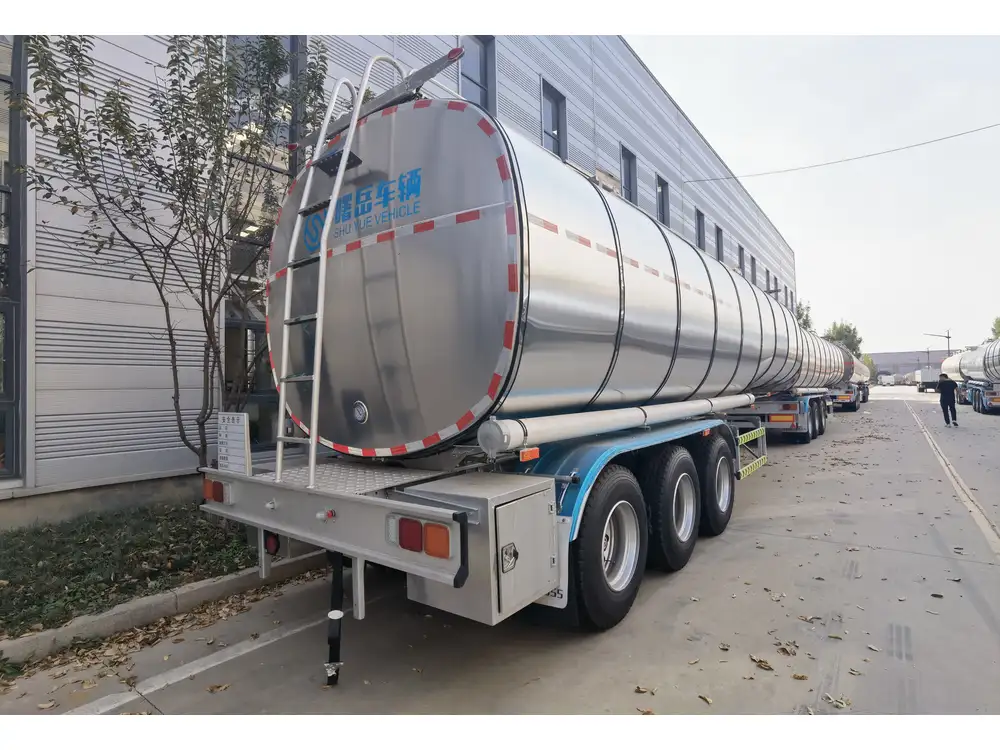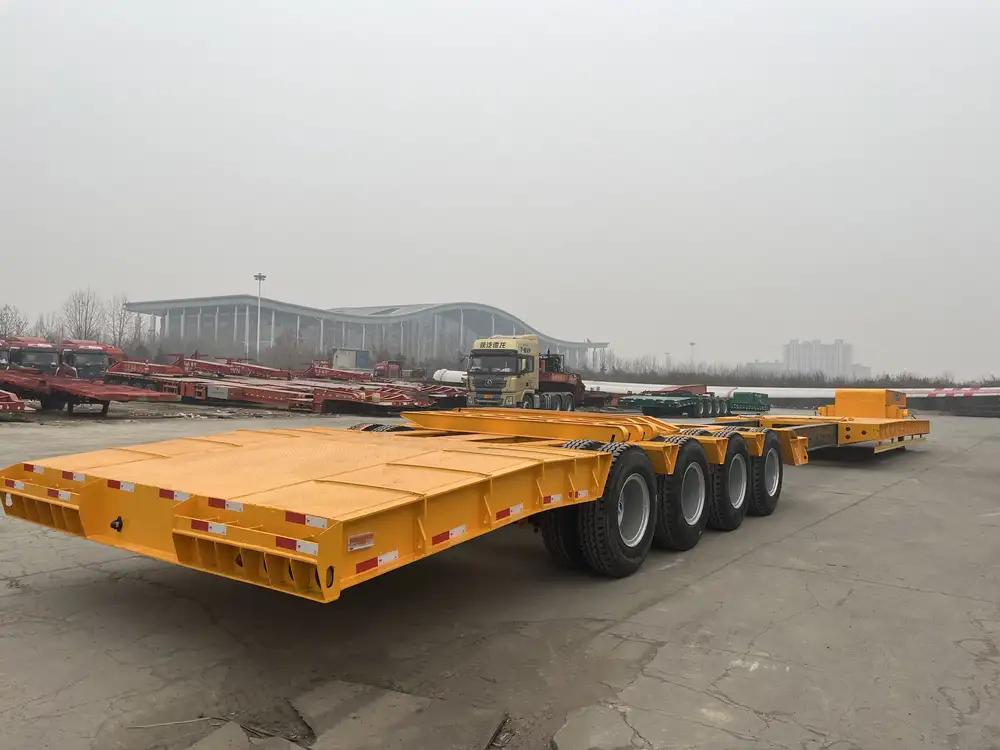Introduction to Gooseneck Flatbed Trailers
Gooseneck flatbed trailers have established themselves as an essential asset in transporting heavy loads across varying terrains. With their unique hitch design, which connects to the bed of a pickup truck, these trailers offer enhanced stability and maneuverability compared to traditional bumper-pull trailers. However, one of the primary questions potential users often have revolves around the width of these trailers. Understanding this aspect is crucial for ensuring compatibility with state regulations, safe loading practices, and effective transportation planning.
What is the Standard Width of a Gooseneck Flatbed Trailer?
The standard width of a gooseneck flatbed trailer typically measures 102 inches (8.5 feet). This dimension is essential for several reasons, including:
- Legal Compliance: Most states in the U.S. adhere to a standard width limit for trailers to prevent hazards on public roadways.
- Load Stability: A wider trailer base can support larger and heavier loads, improving balance and reducing rollover risks during transport.

Comparison Table: Standard Width vs. Over-width Trailers
| Trailer Type | Standard Width (inches) | Over-width (inches) | Legal Implications |
|---|---|---|---|
| Gooseneck Flatbed | 102 | 104+ | Requires special permits |
| Bumper Pull Trailer | 96 | 98+ | May require caution signs |
| Equipment Trailer | 82 | 84+ | Generally more flexible |
Benefits of Understanding Trailer Width
Enhanced Load Management: Knowledge of the trailer’s width assists operators in determining what types of loads are permissible, ultimately leading to better management of cargo and preventing potential fines associated with exceeding legal limits.
Increased Safety: Wider trailers provide an enhanced platform for heavy cargo, thereby reducing the likelihood of load shifts during transit. This stability is particularly important when navigating tight corners or uneven surfaces.
Compatibility with Towing Vehicles: Understanding the width helps ensure compatibility with towing vehicles. If a trailer exceeds specified width limits, towing vehicles must also be equipped to handle such loads.
Varied Types of Gooseneck Flatbed Trailers
The market features various gooseneck flatbed trailers varying in width, length, and design. Here are the common types:

1. Standard Gooseneck Flatbed Trailers
- Width: 102 inches
- Features: Flat surface suitable for hauling a variety of materials such as machinery, lumber, and vehicles.
2. Beavertail Gooseneck Trailers
- Width: 102 inches
- Features: Offers a sloped rear end for easier loading, especially for vehicles and heavy equipment.
3. Low Profile Gooseneck Trailers
- Width: 102 inches
- Features: Built closer to the ground, providing lower loading angles, which is beneficial for hauling tall and heavy cargo.

4. Heavy-Duty Gooseneck Trailers
- Width: 102 inches
- Features: Reinforced frames suitable for particularly heavy or oversized loads, often featuring additional safety features.
Regulations that Affect Trailer Width
Understanding the regulations related to trailer width is critical for compliance and safe transport:
Federal Regulations
The Federal Highway Administration (FHWA) stipulates that the maximum width for commercial trailers should not exceed 102 inches without special permits. Exceeding this width typically involves:
- Permits and Fees: Operators must obtain a permitting process, which often includes additional fees and restrictions on travel times and routes.
- Signage Requirements: Over-width trailers often require signage to warn other road users.

State Regulations
Each state may impose its regulations regarding trailer size and width. For instance:
- California: Standard trailer width is similar to federal regulations, but additional requirements may apply.
- Texas: Generally adheres to the 102-inch standard; however, local jurisdictions may have specific stipulations for wider loads.
Local Ordinances
Certain counties or municipalities may have additional regulations affecting trailer use during specific times or on specific roads. Always check local guidelines.
Key Considerations When Buying a Gooseneck Flatbed Trailer
When selecting a gooseneck flatbed trailer, width is just one aspect to consider. Here are other crucial factors:

1. Payload Capacity
Knowing the payload capacity of the trailer ensures your transport needs are met without risking overload, which can lead to structural failure.
2. Material and Build Quality
- Steel vs. Aluminum: Steel might offer enhanced durability but comes with added weight. Aluminum, while lightweight, may have lower load capacities.
3. Axle Configuration
The number of axles on a trailer can significantly affect its load-carrying capacity and stability. Common configurations include:
| Number of Axles | Weight Capacity |
|---|---|
| 2 | Up to 14,000 lbs |
| 3 | 15,000 – 30,000 lbs |
| 4 | 30,000+ lbs |

4. Length Options
Gooseneck flatbeds come in various lengths, often ranging from 20 feet to 40 feet. Choose a length appropriate for the type of loads you intend to haul.
How to Measure Trailer Width Accurately
Measuring your gooseneck trailer width accurately is crucial to ensuring compliance with regulations and safety standards.
Use a Tape Measure: Measure from the outer edge of one wheel fender to the outer edge of the opposite wheel fender.
Account for Side Rails: Some trailers feature side rails or other protrusions that are part of the width measurement.
Consult Manufacturer Specifications: Always refer to the manufacturer’s specifications for accurate width data, as variations can occur.
Conclusion: The Importance of Width in Gooseneck Flatbed Trailers
Understanding how wide a gooseneck flatbed trailer is can significantly influence your logistics operations. With a width of generally 102 inches, these trailers offer a framework for safe and efficient transportation of heavy cargo. By considering other factors like load capacity, build quality, and adherence to federal and state regulations, you can make informed decisions when purchasing or utilizing a gooseneck flatbed trailer.

Key Takeaways
- Know Your Width: Familiarity with the standard and permissible widths can keep operations within legal parameters.
- Safety First: A proper understanding allows for safer transport practices and minimizes the risk of load shifts.
- Informed Decisions: Awareness of various types of gooseneck trailers can guide you in selecting the right one for your needs.
By comprehensively assessing these elements, businesses can optimize loading, ensure compliance, and enhance the safety and efficiency of their hauling operations. Understanding the nuances of gooseneck flatbed trailers, particularly their widths, is a crucial step toward improving your transport logistics—ensuring you choose the right trailer for robust performance on the road.



